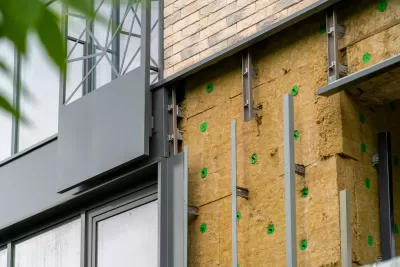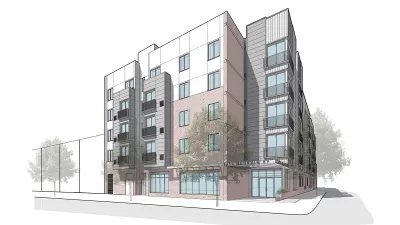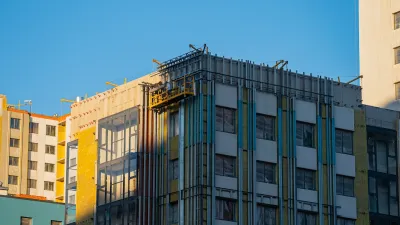Developers in Chicago and around the country are taking notice of a design standard that encourages energy efficiency and sustainable materials.

Multi-family housing developers in Chicago are embracing Passive House design standards to lower their carbon footprints and reduce costs. As Lizzie Kane reports in the Chicago Tribune, “Multifamily developers, particularly those building affordable housing, in Chicago have begun to embrace Passive House design in the last few years thanks to local industry professionals advocating for changes in the city and state building energy codes, as well as buy-in from ComEd, the primary energy provider in the state.”
“Passive House design focuses on making a building tightly sealed by including features such as triple-paned windows and wraparound insulation to keep outside temperatures from creeping in (and noise too), as well as ventilation systems to keep air quality fresh,” Kane explains.
The Passive House standard, originally geared toward single-family homes, is being implemented on around 275 multi-family projects nationwide, according to a study from the Passive House Network. “The study said in order to speed up the pace of Passive House development, local, state and federal policymakers should finance incentive programs, offer professional training, increase provisions in state affordable housing programs and amend compliance rules in energy codes.” Passive House was recently added to Chicago’s Sustainable Development Policy and the city’s building code.
Kane describes other city and state policies in the works that will incentivize the Passive House standard and make it easier to build low-impact, efficient buildings at lower cost. Outside of Illinois, “Massachusetts, New York, Pennsylvania and Connecticut lead the way in multifamily buildings being developed to meet the Passive House standard, with each state having more than 50 properties in the pipeline or already completed, according to Phius’ database.”
FULL STORY: Passive House design is coming to Chicago’s multifamily housing industry

Study: Maui’s Plan to Convert Vacation Rentals to Long-Term Housing Could Cause Nearly $1 Billion Economic Loss
The plan would reduce visitor accommodation by 25,% resulting in 1,900 jobs lost.

North Texas Transit Leaders Tout Benefits of TOD for Growing Region
At a summit focused on transit-oriented development, policymakers discussed how North Texas’ expanded light rail system can serve as a tool for economic growth.

Using Old Oil and Gas Wells for Green Energy Storage
Penn State researchers have found that repurposing abandoned oil and gas wells for geothermal-assisted compressed-air energy storage can boost efficiency, reduce environmental risks, and support clean energy and job transitions.

Santa Barbara Could Build Housing on County Land
County supervisors moved forward a proposal to build workforce housing on two county-owned parcels.

San Mateo Formally Opposes Freeway Project
The city council will send a letter to Caltrans urging the agency to reconsider a plan to expand the 101 through the city of San Mateo.

A Bronx Community Fights to Have its Voice Heard
After organizing and giving input for decades, the community around the Kingsbridge Armory might actually see it redeveloped — and they want to continue to have a say in how it goes.
Urban Design for Planners 1: Software Tools
This six-course series explores essential urban design concepts using open source software and equips planners with the tools they need to participate fully in the urban design process.
Planning for Universal Design
Learn the tools for implementing Universal Design in planning regulations.
Ascent Environmental
Borough of Carlisle
Institute for Housing and Urban Development Studies (IHS)
City of Grandview
Harvard GSD Executive Education
Toledo-Lucas County Plan Commissions
Salt Lake City
NYU Wagner Graduate School of Public Service





























